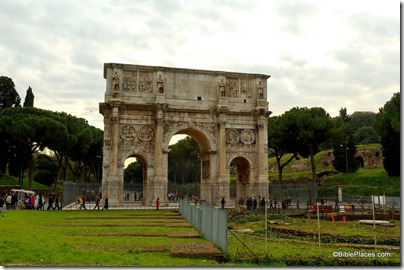How many times have you rushed through an ancient site, taking as many pictures as you could, but when it was all done you didn’t realize exactly what you saw? And when it comes time to label your photos or describe them to a friend, you’re at a loss? Google Street View could be a useful tool in your attempt to “remember” what you saw and where. The ambitious program is venturing not only into European cities, but their ancient ruins as well. Pompeii was put online last year and now work is underway for the ruins of ancient Rome. Once it is complete, you’ll be able to retrace the steps of your tour and make sure that you don’t confuse the Arch of Septimus Severus with the Arch of Constantine. BBC News has a 2-minute video describing the project.
 Arch of Constantine, Rome
Arch of Constantine, Rome